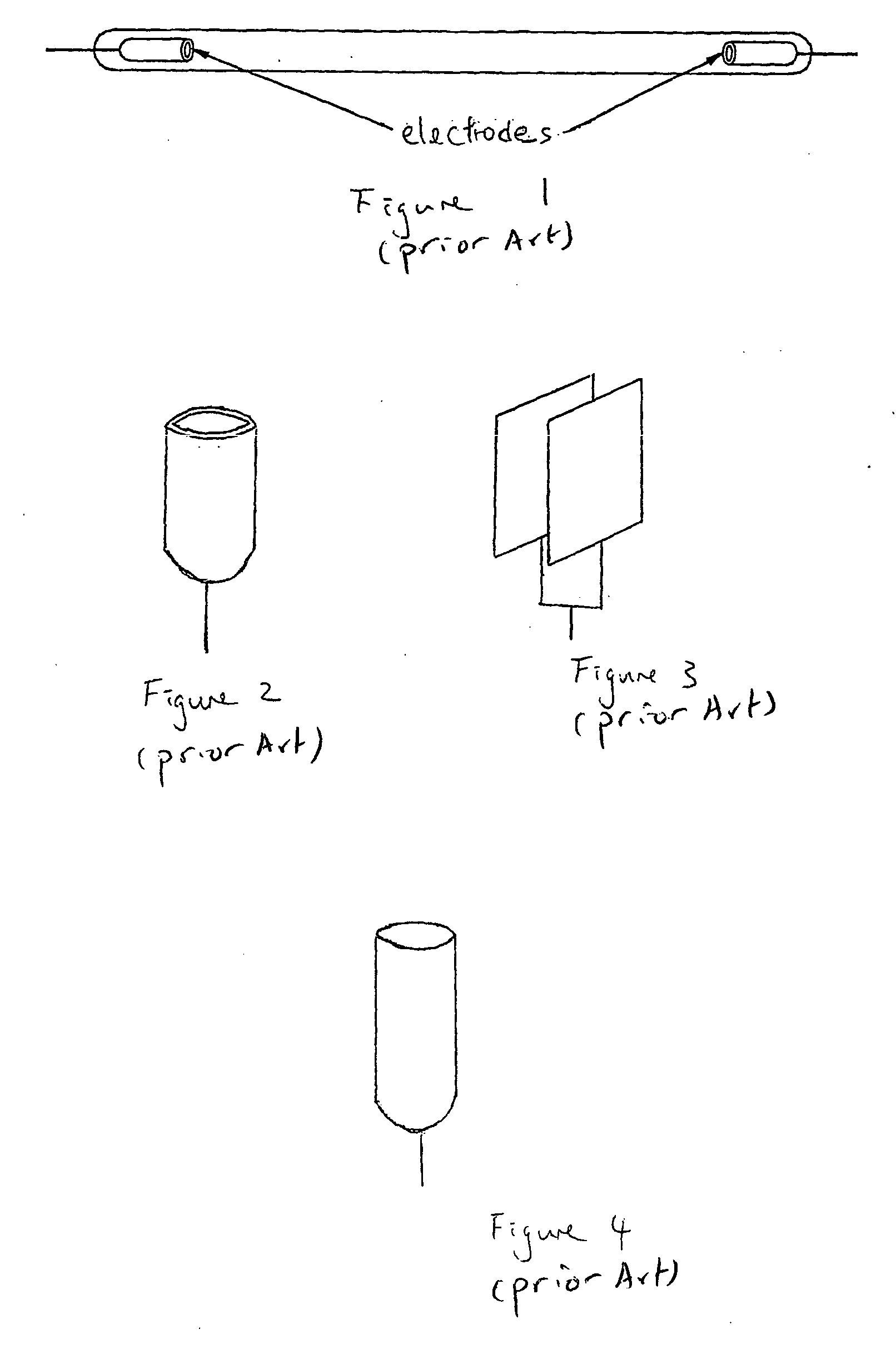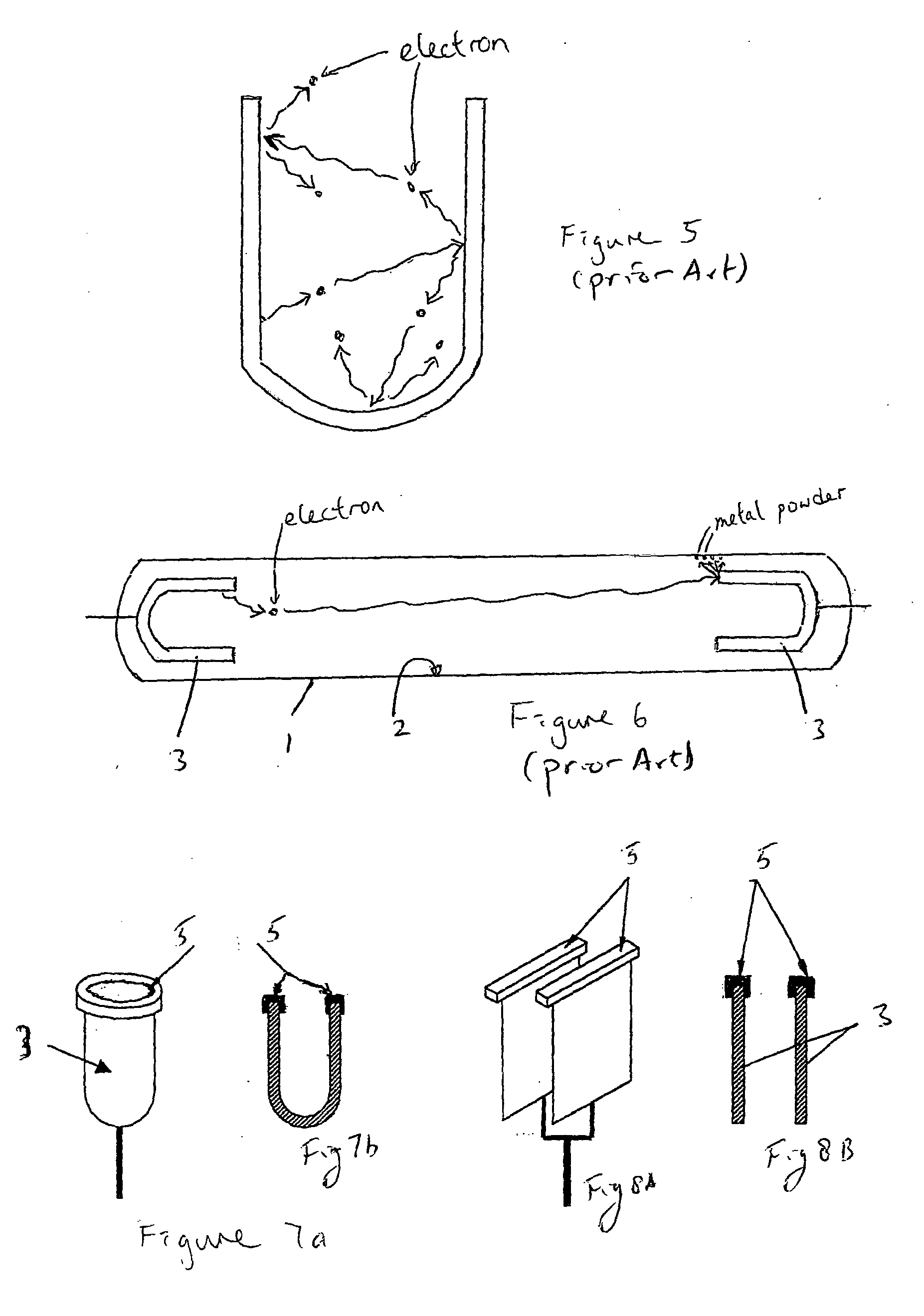Cold cathode fluorescent lamps
a technology of fluorescent lamps and cathode tubes, applied in the direction of discharge tubes, low-pressure discharge lamps, discharge tubes luminescnet screens, etc., can solve the problems of sputtering, electrodes are “deactivated” and lamps are no longer operational, so as to reduce and/or eliminate sputtering and improve the life of ccfl.
- Summary
- Abstract
- Description
- Claims
- Application Information
AI Technical Summary
Benefits of technology
Problems solved by technology
Method used
Image
Examples
Embodiment Construction
[0061] One embodiment of the present invention involves the use of an electron shield or cap made of electrically insulating and heat resistant material, such as ceramic material, quartz, or enamel which is attached to the end of at least one of the electrodes (or to only the cathode if the lamp is driven by DC current). Since alternating current is commonly applied to the CCFL used (usually with a frequency in the range of 30 kHz to 100 kHz), both electrodes can be considered a “cathode”. The CCFL will normally consist of a sealed lighting tube 1 (preferably of 12 mm outside diameter or less) which has provided on at least part of its inwardly facing surface 2 a phosphorous material. Within the lighting tube (preferably of a cylindrical thin wall sectioned) will be provided at least one and preferably two electrodes as for example shown in FIG. 10. The electrodes 3 may themselves be substantially of a cylindrical shape as for example as shown in FIG. 7, or consist of parallel plate...
PUM
 Login to View More
Login to View More Abstract
Description
Claims
Application Information
 Login to View More
Login to View More - R&D
- Intellectual Property
- Life Sciences
- Materials
- Tech Scout
- Unparalleled Data Quality
- Higher Quality Content
- 60% Fewer Hallucinations
Browse by: Latest US Patents, China's latest patents, Technical Efficacy Thesaurus, Application Domain, Technology Topic, Popular Technical Reports.
© 2025 PatSnap. All rights reserved.Legal|Privacy policy|Modern Slavery Act Transparency Statement|Sitemap|About US| Contact US: help@patsnap.com



